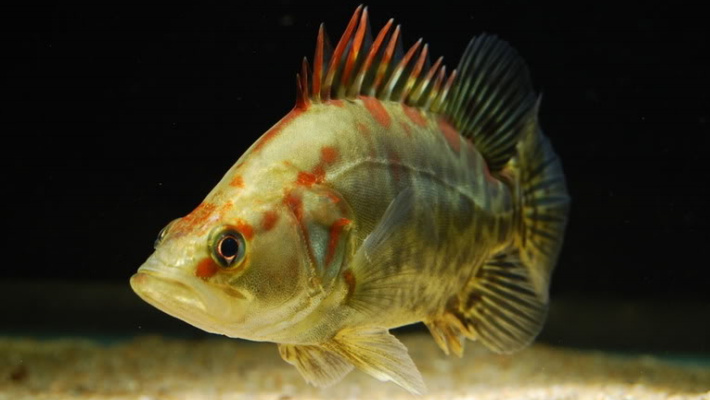|
Comparative
chemical composition of
two freshwater sludgeworms, Tubifex
tubifex and Limnodrilus hoffmeisteri,
has been studied by Whitten & Goodnight (1982). These authors have found, in
particular, that L. hoffmeisteri
contain the significantly greater amount of lipid soluble material than T. tubifex. Graney et al. (1986) have
measured the concentrations of free amino acids in five species of freshwater
sludgeworms (L. hoffmeisteri, T. tubifex,
Potamothrix moldaviensis, P. vejdovskyi and Stylodrilus heringianus). Alanine, represented between 23,1 % and
41,8 % of the total free amino acid pool, has been found to be most abundant in
all species.
Chemical
composition of T. tubifex is
determined by Saglio et al., (1990) in the context to study the attractiveness of amino acids to fish.. Basic
amino acids such as lysine (12,0 mg l−1), histidine (9,1 mg l−1) and arginine (8,1 mg
l−1) as well as non-polar amino acid such as alanine (11,7 mg l−1)
are most abundant in the crude tubifex extract (500 mg l−1).
According to Yanar
et al. (2003), the most
abundant amino acids (g per 100 g protein) in T. tubifex are lysine (6,54), leucine (6,52) and argenine (5,39). On
the crude protein content (% of dry matter), T. tubifex (58,68 %) is near to enchytraeid worms, Enchytraeus sp., and brine shrimp, Artemia salina, but lags behind cladocerans, such as Daphnia sp. and Moina sp., as well as copepods, such as Tigriopius japonicus and Acartia
clausi (from 70,09 % to 72,13 %). Total fatty acid content is 7.28 mg per 100 mg dry weight, ω-3 and ω-6 fatty acids compose 18 % and 22 % of the
total, respectively (Yanar et al., 2003).
T. tubifex can be considered as the caratenoid source
with the total carotenoids measured at the level of 15,02 mg kg-1 (Yanar
et al., 2003). This
amount is close to the
value (about 40 mg kg-1)
needed in diet of fish to ensure their
pigmentation (e.g., Christansen
& Wallace, 1988; Choubert & Storebakken 1989).
Attractiveness
Accordung
to Saglio et al., (1990), the crude tubifex extract is significantly attractive
for common carp, Cyprinus carpio, in
the range of concentrations tested (5 mg l−1, 50 mg l−1,
500 mg l−1, 5 g l−1). Maximum attraction is obtained in
response to the extract with concentration of 500 mg l−1.
Experimental
tests of the four chemical groups of amino acids show that acidic amino acids
(aspartic and glutamic) do not produce significant activity in carp. Basic
amino acids (lysine, histidine and arginine) as well as polar, uncharged amino
acids (glycine, serine, threonine, tyrosine, asparagine and glutamine) are
ineffective as attractants but significantly increase exploratory behaviour in
carp. Non-polar amino acids (alanine, valine, leucine, isoleucine,
phenylalanine and methionine) show significant effects on both attraction and
exploration.
Saglio et
al., (1990) have found that combination of alanine, valine and glycine acts
similar to the crude tubifex extract. To match the dose of 500 mg l−1 of the crude
tubifex extract, concentrations of alanine, valine and glycine are 1,3 x 10-7 mol l−1, 5,7 x 10-8 mol l−1 and 5,0 x 10-8 mol l−1, respectively.
For
camparison, an extract of pupa silkworm, Bombyx
mori, contains more acidic amino acids (27,1%) (Tsushima & Ina, 1978)
than an extract of sludgeworms (10,9%). According to experimental findings by
Kasumyan & Morsi (1996), asparttic and glutamic acids are attractive (after cysteine and proline) for C. carpio as gustatory stimulants.
Basic References
Choubert G., Storebakken T. 1989. Dose response to
astaxanthin and canthaxanthin pigmentation of rainbow trout fed verious dietary
carotenoid concentration. Aquaculture 81, 69-77
Christiansen,
J.S.,Wallace J.C. 1988. Deposition of
canthaxanthin and muscle lipid on two size groups of charr, Salvenilus alpinus (L.). Aquaculture 69, 69-78
Graney
R.L., Keilty T,J,, Giesy J.P. 1986. Free amino acid pools of five species of freshwater oligochaetes. Canadian
Journal of Fisheries and Aquatic Sciences 43, 600-607
Kasumyan
A.O., Morsi A.M.K. 1996. Taste sensitivity of the carp, Cyprinus carpio, to
free amino acids and classic taste substances. Journal of Ichthyology 36, 386-399
Tsushima J., Ina K. 1978. Survey of feeding stimulants for carp, Cyprinus carpio
(studies of feeding stimulants for fishes, part III). Journal of the Agricultural Chemical Society of Japan 52, 225-229
Saglio P.,
Fauconneau B., Blanc J.M. 1990. Orientation of carp, Cyprinm carpio L., to free amino acids from Tubifex extract in an
olfactometer. Journal of Fish Biology 37, 887-898
Whitten B.K., Goodnight C.J. 1982. The comparative chemical
composition of two aquatic oligochaetes. Comparative Biochemistry and Physiology 17, 1205–1207
Yanar M.,
Yanar Y., Ayçe Genç M. 2003. Tubifex tubifex Müller, 1774 (Annelidae)’in besin kompozisyonu. E.U. Journal of Fisheries & Aquatic Sciences 20, 103-110
|








 SUBSCRIBE
SUBSCRIBE


